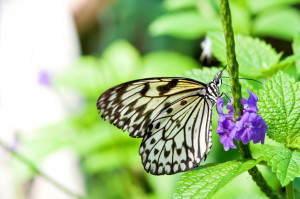Nameplates for Plants Can Help You Plan Who Visits Your Backyard
 You’ve filled your yard with a colorful gourmet of perennials set to entice all the neighborhood butterflies to your garden. You have the fuel for the adult butterflies, but have you provided for their children? If not, they are on their way to lay their eggs in the garden down the street where their descendants may just decide to stay if given the right food, sunlight, water, and shelter. In order to attract the most butterflies to your yard, you need to plant specific species for specific caterpillars. Nameplates for plants can help you remember and organize all the plants you’ll need to attract and keep those beautiful insects in your yard.
You’ve filled your yard with a colorful gourmet of perennials set to entice all the neighborhood butterflies to your garden. You have the fuel for the adult butterflies, but have you provided for their children? If not, they are on their way to lay their eggs in the garden down the street where their descendants may just decide to stay if given the right food, sunlight, water, and shelter. In order to attract the most butterflies to your yard, you need to plant specific species for specific caterpillars. Nameplates for plants can help you remember and organize all the plants you’ll need to attract and keep those beautiful insects in your yard.
Mother Butterfly Knows Best
While most butterflies will sip from a variety of flower nectar, during their stage as a caterpillar they require certain leafy plants. A Monarch Butterfly will only lay its eggs on Milkweed plants so their caterpillars can feast specifically on it. A Meadow Fritillary caterpillar prefers violets, while a Compton Tortoise Shell prefers trees such as Birch, Poplar or Willow. Butterflies may not be picky about what flowers they sip, but they know where they must go to lay their eggs.
Who Visits Your Neighborhood?
When choosing butterfly plants for your backyard you’ll need to do some research. You may not care which butterflies come to your yard, but if you start to identify some of the ones you have seen in the neighborhood, you can plant the food those butterflies eat in their caterpillar stage. Label (for yourself, not the butterfly) the new host plants that will attract mother butterflies to lay their eggs on.
Labeling For Future Moves
It’s difficult enough to remember the names of the butterflies you’ve identified in your backyard, you shouldn’t have to also try to memorize all the colorful nectar sources in your yard. Nameplates for plants can help you remember those winged drifters that come and go through your garden over the years.
Nameplates for plants allow you to label both the plants for a caterpillar and its butterfly form. Over the seasons, you may realize you have another host plant across the yard you want to move closer to a nectar source. Having nameplates for plants will help you identify and organize your plants as you keep grooming your yard for scores of butterflies.
Diversify Your Garden
By placing your caterpillar and butterfly plants near each other, you are helping keep the new butterfly near a nectar source. Before this can happen, the caterpillar has to find a sheltered place to form its chrysalis. Butterfly gardens also need trees, shrubs and other vegetation to protect butterflies from the wind and for them to find a place to put their chrysalis.
We at Kincaid Plant Markers can help you plan for your neighborhood’s best butterfly garden. We don’t condone stealing from your neighbors, but we think of it as sharing those pollinators with the whole block. Our nameplates for plants can help you keep the process and plants all straight so that your butterfly garden soars into success.

Identifying Flowers to Attract Butterflies – Kincaid Plant Markers
[…] But you don’t have to travel to the damp forests of South America to enjoy butterflies. By identifying flowers that attract and support butterflies you can enjoy them in your very own […]